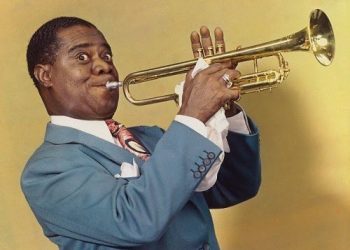Guitar players, often regarded as virtuosos and sonic architects, wield their instruments to shape the musical landscape across genres. The guitar’s versatility allows players to express a vast range of emotions and styles, making them central figures in the world of music.
From the intricate fingerpicking of folk to the searing solos of rock and the soulful expressions of blues, guitar players have become synonymous with the very essence of these genres. Their ability to navigate the fretboard, coaxing out melodies, harmonies, and raw emotion, elevates the guitar to a position of prominence in countless ensembles and solo performances.
In rock music, guitar players are often celebrated for their technical prowess, innovative techniques, and unique sonic signatures. Their riffs and solos can define an entire era, shaping the sound and attitude of the music.
In the realm of jazz, guitarists contribute to the genre’s rich improvisational tradition, skillfully navigating complex chord progressions and showcasing their melodic ingenuity. In blues, the guitar becomes a vessel for expressing deep emotions and storytelling, with players often forging a direct connection between their instrument and the listener’s soul.
Whether on acoustic or electric, in the spotlight or as part of an ensemble, guitar players embody the spirit of innovation and creativity. Their influence transcends musical boundaries, making them iconic figures who leave an indelible mark on the ever-evolving tapestry of global music.
1. Jimi Hendrix
Jimi Hendrix, born on November 27, 1942, in Seattle, Washington, was an American guitarist, singer, and songwriter who revolutionized the world of rock music with his unparalleled innovation, virtuosity, and sonic experimentation. Widely regarded as one of the greatest guitarists in the history of popular music, Hendrix’s influence extends far beyond his brief but impactful career.
Hendrix burst onto the scene in the late 1960s, captivating audiences with his electrifying performances and a revolutionary approach to the electric guitar. His mastery of techniques, such as feedback, distortion, and wah-wah effects, pushed the boundaries of what was thought possible with the instrument. Songs like “Purple Haze,” “Hey Joe,” and “Voodoo Child (Slight Return)” showcased his unparalleled ability to blend psychedelic, blues, and rock elements into a distinct and groundbreaking sound.
His performance at the Woodstock Festival in 1969, including an iconic rendition of “The Star-Spangled Banner,” remains etched in the annals of music history. Hendrix’s stage presence, coupled with his jaw-dropping guitar skills, solidified his status as a countercultural icon and a symbol of musical freedom.
Tragically, Jimi Hendrix’s life was cut short when he died at the age of 27 in September 1970. Despite his relatively brief career, Hendrix’s impact on the evolution of rock and his enduring influence on generations of guitarists have solidified his legacy. Jimi Hendrix’s revolutionary approach to the guitar continues to inspire musicians and remains a touchstone for those seeking to push the boundaries of musical expression.
2. Eric Clapton
Eric Clapton, born on March 30, 1945, in Ripley, Surrey, England, is a legendary guitarist, singer, and songwriter whose profound impact on the world of rock and blues has spanned several decades. Often referred to as “Slowhand” for his deliberate and soulful playing style, Clapton’s influence reaches far beyond his roles in iconic bands and his successful solo career.
Clapton first gained attention as a member of The Yardbirds and later joined John Mayall’s Bluesbreakers, where he earned acclaim for his virtuosic blues guitar work. His time with Cream, a supergroup featuring Jack Bruce and Ginger Baker, showcased his ability to seamlessly blend blues, rock, and psychedelia. Classics like “Sunshine of Your Love” and “White Room” are enduring testaments to Cream’s impact on the late 1960s rock scene.
As a solo artist, Eric Clapton continued to evolve, exploring acoustic and electric blues, rock, and even reggae. His emotional depth and poignant songwriting shine in hits like “Layla,” “Tears in Heaven,” and “Wonderful Tonight.”
Clapton’s collaborations with other music legends, such as George Harrison, Duane Allman, and B.B. King, further highlight his versatility and ability to complement diverse musical styles. His lifelong dedication to the blues, as well as his contributions to rock, have earned him numerous awards, including multiple Grammy Awards.
Beyond his musical achievements, Eric Clapton’s influence on guitarists and his enduring contributions to the rock genre underscore his status as a living legend. Slowhand’s enduring legacy as a guitar virtuoso and a musical innovator cements his place as one of the most influential figures in the history of contemporary music.
3. Jimmy Page
Jimmy Page, born on January 9, 1944, in Heston, Middlesex, England, is an iconic English guitarist, songwriter, and record producer. Renowned for his virtuoso guitar skills and visionary approach to music, Page is best known as the founder and guitarist of the legendary rock band Led Zeppelin.
Page’s musical journey began in the 1960s as a sought-after session guitarist, contributing to numerous recordings for artists like The Kinks and The Who. His exceptional talent led him to join The Yardbirds, where he played alongside fellow guitar legend Jeff Beck. When The Yardbirds disbanded in 1968, Page formed Led Zeppelin.
Led Zeppelin, comprising Page, Robert Plant, John Paul Jones, and John Bonham, became one of the most influential and successful rock bands in history. With their groundbreaking sound that blended blues, rock, and folk, Led Zeppelin produced timeless classics such as “Stairway to Heaven,” “Whole Lotta Love,” and “Immigrant Song.” Page’s intricate guitar riffs and innovative production techniques became hallmarks of the band’s sound.
Jimmy Page’s impact on rock music extends beyond Led Zeppelin. His production work, including collaborations with artists like Bad Company and The Rolling Stones, showcases his versatility. Page’s iconic double-necked Gibson guitar and his use of the violin bow on the guitar strings became iconic symbols of his stage presence.
In addition to his achievements with Led Zeppelin, Jimmy Page’s solo work and collaborations demonstrate his ongoing commitment to musical exploration. He has been honored with numerous awards, including induction into the Rock and Roll Hall of Fame with Led Zeppelin in 1995.
Jimmy Page’s influence on the development of hard rock and heavy metal, along with his innovative guitar techniques, make him a revered figure in the history of rock music. His enduring impact on guitar playing continues to inspire generations of musicians worldwide.
4. Keith Richards
Keith Richards, born on December 18, 1943, in Dartford, Kent, England, is an English guitarist, songwriter, and founding member of the iconic rock band The Rolling Stones. As a guitarist and one of the primary songwriters for the band, Richards has played a pivotal role in shaping the sound and legacy of one of the greatest rock and roll bands in history.
Richards, along with Mick Jagger, formed The Rolling Stones in 1962. The band quickly rose to fame with a string of hits that showcased Richards’ distinctive guitar style, blending blues, rock, and R&B influences. Classic songs like “Satisfaction,” “Paint It Black,” and “Jumpin’ Jack Flash” are enduring examples of Richards’ riff-driven, blues-infused guitar work.
Known for his gritty, open-tuning guitar playing, Richards became a defining figure in the world of rock and roll. His partnership with Mick Jagger in songwriting has been a driving force behind The Rolling Stones’ longevity and success.
In addition to his contributions to The Rolling Stones, Keith Richards has pursued solo projects and collaborations with other artists. His solo albums, such as “Talk Is Cheap” (1988) and “Main Offender” (1992), showcase his songwriting abilities and his distinct voice as a solo artist.
Richards’ image as a rock ‘n’ roll icon is also characterized by his unique style, including his signature skull ring, bandanas, and unapologetic attitude. Despite challenges, including well-documented struggles with substance abuse, Keith Richards has remained a central figure in rock music, known for his enduring commitment to the art of songwriting and performing.
Inducted into the Rock and Roll Hall of Fame with The Rolling Stones in 1989, Keith Richards’ influence on rock music is immeasurable. His enduring legacy as a guitarist and songwriter has left an indelible mark on the history of rock and roll.
5. Jeff Beck
Jeff Beck, born on June 24, 1944, in Wallington, Surrey, England, is a pioneering guitarist whose innovative and eclectic approach has left an indelible mark on the world of rock music. Renowned for his technical prowess, versatility, and willingness to push the boundaries of guitar playing, Beck’s influence spans multiple genres.
Beck first gained attention as the lead guitarist for The Yardbirds in the mid-1960s, succeeding Eric Clapton. His groundbreaking work on songs like “Heart Full of Soul” and “Shapes of Things” showcased his unique use of feedback, distortion, and novel playing techniques. Beck’s ability to coax unconventional sounds from his guitar set him apart during the British Invasion.
In the late 1960s and early 1970s, Jeff Beck’s solo career flourished, marked by the release of albums like “Truth” (1968) and “Blow by Blow” (1975). The latter, a fusion of jazz, rock, and funk, earned critical acclaim and established Beck as a leading figure in instrumental rock.
Beck’s collaborations with various artists further demonstrated his adaptability. His work with Rod Stewart on albums like “Truth” and “Beck-Ola” showcased his blues-rock prowess, while his forays into jazz fusion with albums like “Wired” (1976) demonstrated his versatility.
Over the years, Jeff Beck has continued to push the envelope, experimenting with electronic effects and exploring new sonic landscapes. His technical wizardry and groundbreaking contributions to rock guitar have earned him accolades, including multiple Grammy Awards and an induction into the Rock and Roll Hall of Fame.
Jeff Beck’s enduring impact on the evolution of rock and his influence on subsequent generations of guitarists solidify his status as a true innovator in the realm of guitar playing.
6. Chuck Berry
Chuck Berry, born on October 18, 1926, in St. Louis, Missouri, was an American guitarist, singer, and songwriter who played a pivotal role in the development of rock and roll. Often referred to as the “Father of Rock and Roll,” Berry’s innovative guitar style and energetic stage presence made him one of the genre’s earliest and most influential figures.
Chuck Berry’s musical career took off in the mid-1950s when he began recording for Chess Records. His groundbreaking singles, including “Maybellene,” “Roll Over Beethoven,” and “Johnny B. Goode,” featured his signature guitar licks, clever lyrics, and a rhythmic approach that became synonymous with rock and roll.
Berry’s guitar technique, characterized by his dynamic and precise use of double stops, bending, and a distinctive two-string soloing style, had a profound impact on subsequent generations of guitarists. His ability to blend elements of rhythm and blues with a catchy, accessible sound contributed to the widespread popularity of rock and roll.
In addition to his guitar prowess, Chuck Berry was a charismatic performer known for his “duck walk” and animated stage antics. His lyrics often depicted teenage life, cars, and the spirit of rock and roll itself, resonating with a youthful audience.
Several of Chuck Berry’s songs became anthems of the rock and roll era, and his influence extended beyond music into popular culture. His impact on the development of rock and roll was recognized with honors such as the Rock and Roll Hall of Fame induction in 1986.
Chuck Berry continued to perform and record throughout his career, leaving an enduring legacy that influenced countless musicians across genres. He passed away on March 18, 2017, but his contributions to the evolution of rock and roll remain a cornerstone of the genre’s history.
7. Stevie Ray Vaughan
Stevie Ray Vaughan, born on October 3, 1954, in Dallas, Texas, was an American blues guitarist and singer whose explosive playing style and soulful interpretations revitalized the blues genre in the 1980s. With a deep appreciation for the blues masters that preceded him, Vaughan’s technical prowess and emotional intensity made him one of the most revered guitarists in modern blues history.
Stevie Ray Vaughan’s breakthrough came with the release of his debut album, “Texas Flood,” in 1983, with his band Double Trouble. The album showcased Vaughan’s searing guitar work, particularly on the title track, and established him as a force to be reckoned with in the blues-rock scene.
Known for his mastery of the guitar and his ability to channel raw emotion through his instrument, Vaughan’s playing was often characterized by blistering solos, expressive bends, and a fiery intensity that echoed the blues greats of the past. His influences, including Albert King and Jimi Hendrix, were evident in his playing, but Vaughan infused his own Texas blues flavor into every note.
Subsequent albums like “Couldn’t Stand the Weather” (1984) and “In Step” (1989) further solidified Vaughan’s reputation. His rendition of Jimi Hendrix’s “Voodoo Child (Slight Return)” and his soulful ballad “Riviera Paradise” showcased the depth and range of his musical expression.
Tragically, Stevie Ray Vaughan’s life was cut short when he died in a helicopter crash on August 27, 1990, at the age of 35. Despite his relatively short career, Vaughan’s impact on the blues genre was immense, and his legacy continues to inspire generations of guitarists who admire his technical skill, passion, and dedication to the blues tradition.
8. B.B. King
B.B. King, born Riley B. King on September 16, 1925, in Itta Bena, Mississippi, was an American blues guitarist, singer, and songwriter. Often hailed as the “King of the Blues,” B.B. King’s impact on the blues genre and his influence on the broader landscape of music are immeasurable.
B.B. King’s career took off in the 1950s when he gained recognition for his soulful voice and expressive guitar playing. His guitar, famously named “Lucille,” became synonymous with the emotional depth and vibrato-rich phrasing that characterized his playing style.
One of King’s most famous songs, “The Thrill Is Gone” (1969), showcased his ability to blend traditional blues with elements of jazz, pop, and R&B. The song became a crossover hit and earned him widespread acclaim. Throughout his career, King released numerous albums and singles that solidified his status as a blues legend.
Known for his warm stage presence and engaging personality, B.B. King became a prolific performer, captivating audiences worldwide. His live performances often featured extended improvisations and heartfelt interactions with his beloved guitar, Lucille.
In addition to his contributions as a performer, B.B. King was a mentor to many musicians and played a vital role in popularizing the blues. His impact on the development of electric blues guitar playing influenced generations of musicians, from rock to jazz.
B.B. King received numerous awards, including multiple Grammy Awards, and was inducted into the Blues Hall of Fame and the Rock and Roll Hall of Fame. Beyond his musical achievements, King’s legacy is marked by his role in preserving and advancing the blues tradition.
B.B. King passed away on May 14, 2015, but his enduring legacy lives on through his timeless recordings, influence on musicians, and his lasting impact on the blues genre.
9. Duane Allman
Duane Allman, born on November 20, 1946, in Nashville, Tennessee, was an American guitarist and a founding member of the Allman Brothers Band. A pioneering figure in Southern rock, Duane Allman’s innovative slide guitar work and improvisational skills left an indelible mark on the world of rock and blues.
Allman’s early career involved session work as a sought-after guitarist, contributing to recordings by artists such as Aretha Franklin and Wilson Pickett. However, his true breakthrough came with the formation of the Allman Brothers Band in 1969. The band’s fusion of blues, rock, and jazz, combined with Duane’s exceptional slide guitar technique, created a distinctive sound that set them apart.
Duane Allman’s slide guitar playing on the iconic track “Layla” by Derek and the Dominos, particularly on the famous coda, remains one of the most celebrated moments in rock history. His contributions to the Allman Brothers Band albums, including “At Fillmore East” (1971), showcased his improvisational prowess on extended jams like “Whipping Post” and “In Memory of Elizabeth Reed.”
Tragically, Duane Allman’s life was cut short when he died in a motorcycle accident on October 29, 1971, at the age of 24. Despite his untimely death, his influence on rock guitarists has endured. Duane Allman’s legacy as a slide guitar virtuoso, innovative musician, and founding force in Southern rock continues to resonate, and his contributions are celebrated as integral to the fabric of American rock music.
10. Eddie Van Halen
Eddie Van Halen, born on January 26, 1955, in Nijmegen, Netherlands, was a Dutch-American guitarist, songwriter, and co-founder of the influential rock band Van Halen. Widely regarded as one of the greatest guitarists in the history of rock music, Eddie Van Halen revolutionized the instrument with his innovative techniques and distinctive sound.
Van Halen’s family moved to the United States when he was a child, and he and his brother Alex Van Halen formed the band Van Halen in the early 1970s. The band quickly gained attention for their energetic live performances and the virtuosic guitar playing of Eddie Van Halen.
Eddie Van Halen’s guitar skills were characterized by his use of tapping, harmonics, and a dazzling array of techniques that pushed the boundaries of what could be achieved on the instrument. His iconic guitar solos, such as those in “Eruption” and “Hot for Teacher,” became legendary in the world of rock and metal.
Van Halen’s self-titled debut album, released in 1978, featured the hit single “Runnin’ with the Devil” and showcased Eddie’s groundbreaking guitar work. The band’s success continued with albums like “1984,” which included the chart-topping single “Jump.”
Beyond his contributions to Van Halen, Eddie collaborated with other artists, including Michael Jackson on the hit song “Beat It,” where his guitar solo became a defining moment of the track.
Eddie Van Halen’s impact on the world of rock guitar playing is immeasurable. He received numerous awards for his musical achievements, including induction into the Rock and Roll Hall of Fame with Van Halen in 2007.
Eddie Van Halen passed away on October 6, 2020, after a battle with cancer. His enduring legacy is marked by his innovation, technical prowess, and the lasting influence he had on generations of guitarists.
11. Slash
Slash, born Saul Hudson on July 23, 1965, in London, England, is a British-American guitarist and songwriter best known for his iconic role as the lead guitarist of the rock band Guns N’ Roses. With his trademark top hat, flowing hair, and Gibson Les Paul guitar, Slash became one of the most recognizable and influential guitarists in the hard rock and heavy metal genres.
Slash rose to prominence in the late 1980s with Guns N’ Roses, a band that achieved massive success with their debut album “Appetite for Destruction” (1987). His searing guitar solos and memorable riffs on songs like “Sweet Child o’ Mine” and “November Rain” contributed to the band’s global acclaim and established him as a guitar hero.
Beyond his work with Guns N’ Roses, Slash has had a prolific career collaborating with various artists. He formed the supergroup Velvet Revolver and released solo albums, showcasing his versatility across rock, blues, and hard rock genres.
Known for his fluid and expressive guitar playing, Slash’s style is rooted in blues and classic rock influences, incorporating elements of hard rock and metal. His melodic yet powerful solos have made him a revered figure among guitar enthusiasts.
In addition to his musical achievements, Slash has received critical acclaim and honors, including a star on the Hollywood Walk of Fame. His legacy as a rock icon and guitar legend continues to influence aspiring musicians, and Slash remains an enduring figure in the history of rock and roll.
12. Angus Young
Angus Young, born on March 31, 1955, in Glasgow, Scotland, is a Scottish-born Australian guitarist and co-founder of the legendary rock band AC/DC. Known for his electrifying stage presence and iconic schoolboy outfit, Angus Young is celebrated for his energetic and blues-infused guitar playing.
Angus moved to Australia with his family at a young age, and in 1973, he formed AC/DC with his brother Malcolm Young. The band quickly gained recognition for its high-energy performances and straightforward, riff-driven rock music.
Angus Young’s guitar style is characterized by his raw, powerful riffs, blistering solos, and a dynamic stage presence that often includes his signature “duck walk” and frenetic movements. His approach to the guitar, rooted in blues and rock traditions, contributed to AC/DC’s distinctive sound.
AC/DC achieved international fame with albums like “High Voltage,” “Highway to Hell,” and the groundbreaking “Back in Black,” which remains one of the best-selling albums of all time. The album featured iconic tracks such as “You Shook Me All Night Long” and “Back in Black,” showcasing Angus Young’s formidable guitar skills.
Throughout AC/DC’s extensive career, Angus Young’s influence on hard rock and heavy metal guitar playing has been profound. His collaboration with his brother Malcolm, who played rhythm guitar, formed the core of the band’s sound.
Despite lineup changes and challenges, Angus Young has remained a consistent and iconic figure in the world of rock music. AC/DC’s resilience and enduring popularity are testaments to the impact of Angus Young’s guitar work and showmanship.
Angus Young’s dedication to his craft and his ability to deliver powerful, memorable performances have solidified his status as one of the greatest rock guitarists of all time. His influence continues to inspire aspiring musicians and rock enthusiasts worldwide.
13. Ritchie Blackmore
Ritchie Blackmore, born on April 14, 1945, in Weston-super-Mare, England, is a legendary guitarist best known for his influential contributions to rock and heavy metal music. With a career spanning several decades, Blackmore’s innovative and virtuosic guitar playing has left an indelible mark on the genre.
Blackmore gained initial recognition as a founding member of Deep Purple in the late 1960s. His distinctive guitar riffs and improvisational solos played a pivotal role in shaping the band’s sound. Hits like “Smoke on the Water” and “Highway Star” showcased Blackmore’s intricate playing and solidified Deep Purple as one of the pioneering bands in hard rock and heavy metal.
In the mid-1970s, Blackmore formed the medieval-inspired rock band Rainbow, where he continued to explore his diverse musical interests. The classical-influenced “Stargazer” and the anthemic “Man on the Silver Mountain” highlighted his versatility and willingness to push the boundaries of rock music.
Ritchie Blackmore’s impact extended beyond hard rock, as he delved into Renaissance and folk-inspired music with his project Blackmore’s Night, featuring his wife, Candice Night. This marked a departure from the electric guitar-driven sound of his earlier career.
Known for his technical proficiency, distinctive guitar tone, and a penchant for blending classical elements with hard rock, Ritchie Blackmore has influenced generations of guitarists. His ability to seamlessly navigate diverse musical styles while maintaining a signature sound has solidified his status as a guitar icon. Whether rocking arenas with Deep Purple or exploring new musical territories, Blackmore’s legacy continues to resonate across the spectrum of rock and metal music.
14. Brian May
Brian May, born on July 19, 1947, in Hampton, Middlesex, England, is an English guitarist, songwriter, and astrophysicist, best known as the guitarist for the iconic rock band Queen. Renowned for his distinctive guitar sound and innovative approach to the instrument, Brian May has left an indelible mark on the world of rock music.
May’s musical journey with Queen began in the early 1970s, and his contributions to the band’s sound were integral to their success. His guitar playing, often characterized by lush harmonies, melodic solos, and the use of his homemade guitar, the “Red Special,” became a defining element of Queen’s music.
Queen’s breakthrough came with albums like “Sheer Heart Attack” (1974) and “A Night at the Opera” (1975), featuring the epic “Bohemian Rhapsody.” May’s guitar solo in “Bohemian Rhapsody” is considered one of the greatest in rock history.
In addition to his guitar work, Brian May is a prolific songwriter and contributed notable songs to Queen’s catalog, including “We Will Rock You,” “Tie Your Mother Down,” and “Who Wants to Live Forever.” His vocal harmonies and occasional lead vocals further showcased his versatility within the band.
May’s influence extends beyond Queen. His solo work, including albums like “Back to the Light” (1992), showcases his songwriting and guitar skills. May has also collaborated with various artists and participated in tribute projects dedicated to Queen’s legacy.
Beyond his music career, Brian May holds a Ph.D. in astrophysics and has contributed to scientific research and education. His passion for astronomy and dedication to social and environmental causes reflect a multifaceted approach to life beyond music.
Brian May’s impact on the world of rock guitar playing, coupled with his role as a key member of one of the greatest rock bands in history, has earned him accolades and recognition. Inducted into the Rock and Roll Hall of Fame with Queen in 2001, Brian May’s legacy as a guitarist, songwriter, and scientist continues to inspire and captivate audiences worldwide.
15. Pete Townshend
Pete Townshend, born on May 19, 1945, in London, England, is an English guitarist, songwriter, and co-founder of the legendary rock band The Who. Recognized for his powerful guitar playing, innovative songwriting, and theatrical stage presence, Townshend played a key role in shaping the sound and ethos of rock music.
Townshend’s career with The Who began in the early 1960s, and the band quickly gained attention for their energetic live performances and anthemic songs. As the principal songwriter, Townshend’s compositions often delved into themes of youth, rebellion, and social issues.
One of Townshend’s notable contributions to rock music is his development of the “windmill” guitar technique, where he rapidly strums the guitar with a circular motion, creating a distinctive and dynamic sound. His use of power chords and feedback became signature elements of The Who’s sound.
The rock opera “Tommy” (1969) marked a pivotal moment in Townshend’s career, showcasing his ambition as a songwriter and the band’s ability to transcend conventional rock structures. The success of “Tommy” was followed by other rock operas, including “Quadrophenia” (1973), solidifying Townshend’s reputation as a visionary songwriter.
Beyond his work with The Who, Pete Townshend has released solo albums and contributed to various musical and theatrical projects. His solo work often explores more introspective and personal themes, displaying a different facet of his songwriting prowess.
Townshend’s impact on the development of rock music goes beyond his musical contributions. His role as a cultural figure and spokesperson for the counterculture in the 1960s and 1970s, along with his activism and reflections on the role of the artist, have added depth to his legacy.
Inducted into the Rock and Roll Hall of Fame with The Who in 1990, Pete Townshend continues to influence generations of musicians with his distinctive guitar style and innovative approach to songwriting. His enduring impact on the world of rock and roll remains a testament to his creative vision and musical legacy.









